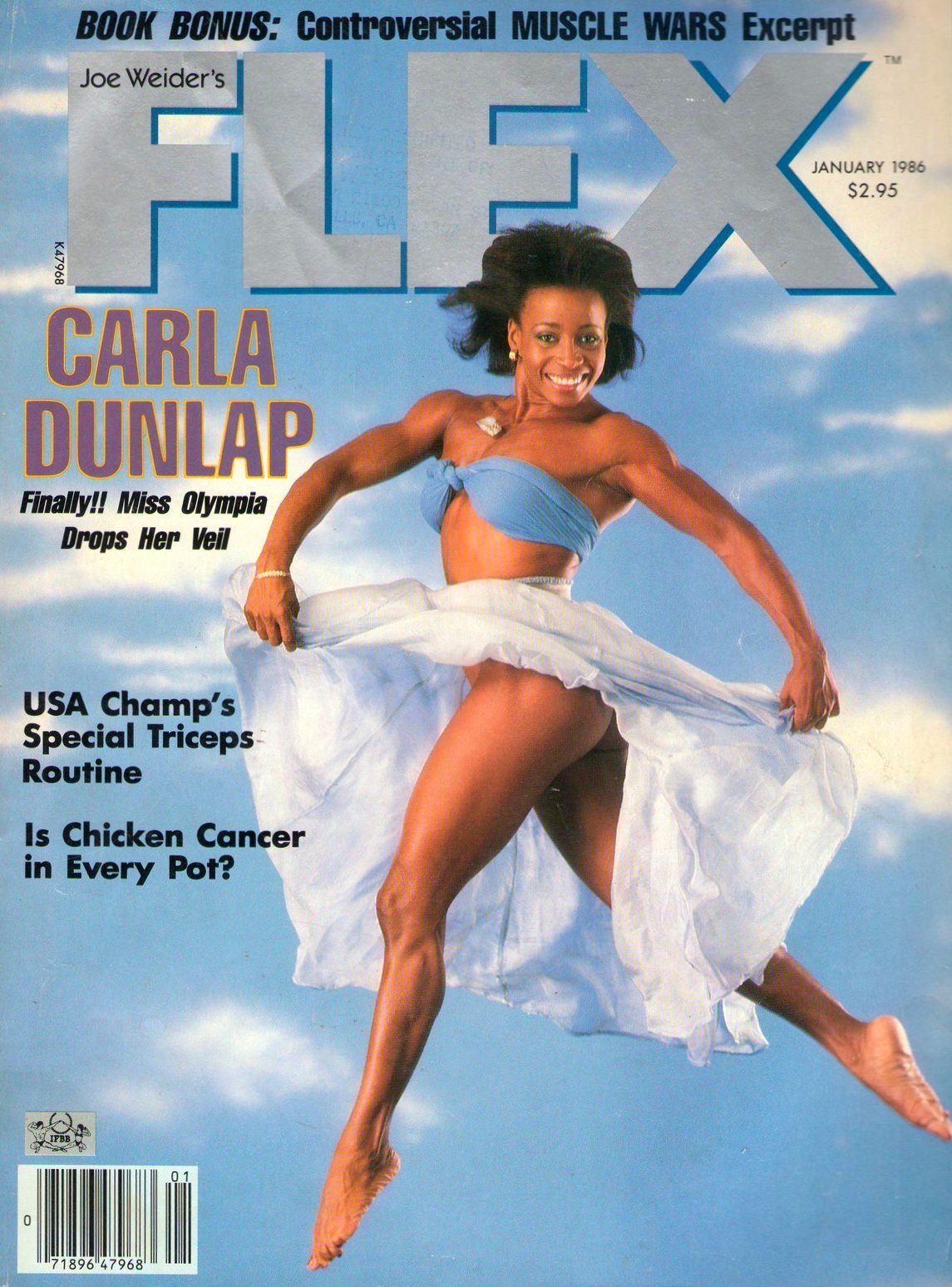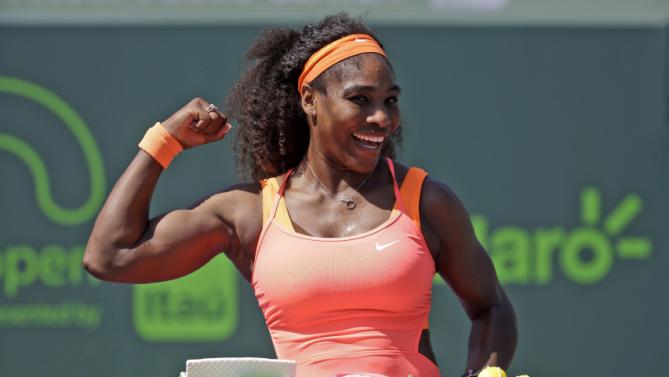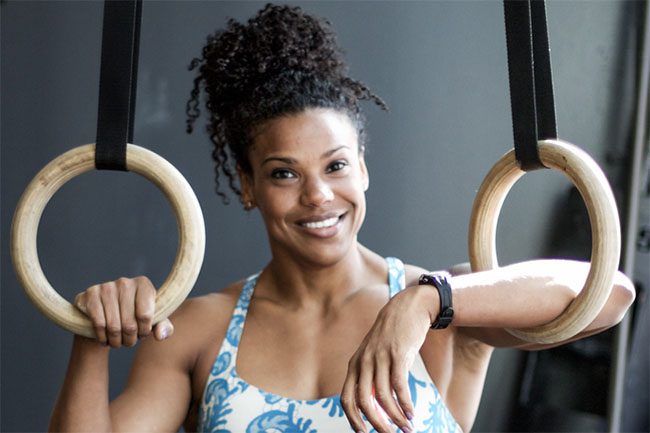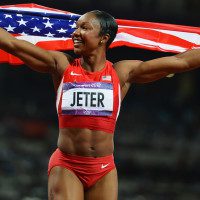Now that I’m older, I’ve really begun to realize that I’m really proud that my body has developed for a purpose and not just to be looked at.
–Ronda Rousey, UFC Women’s Bantamweight Champion
Before attempting to make any observation about the manipulated view of the female body, I have to note that, as a man, when I wake up in the morning and look into one of the two mirrors in my house, I am aware of how few public demands or inquiries society makes about my body. Aside from my height (I am 5’8, 5’9 on a good day), my body receives very little vocal criticism. And as we have seen with the “dad bod” and “fluffy” trends, there is a fairly broad range of acceptable, if not praised, male body types. Such range is not popularly afforded to women. So, again, in writing about this subject I hope to do so with an awareness of the body image privilege I possess being a man in society as opposed to a woman.
It may be wisest for me to focus on my personal relationship with the athletic female form, and that story begins in third-grade. Franklin Elementary School (now Whitney Houston Academy), East Orange, New Jersey—there was a boy in our class whose mother was a bodybuilder. I remember being fascinated with the idea, though that fascination mostly manifested itself in my asking the kid “does your mom beat up your dad?”
I could also begin by stating that the 1983 Ms. Olympia and IFBB Hall-of-Famer Carla Dunlap is a cousin of mine, but that fact never had much bearing on my development because I never really met cousin Carla. I might have seen her on ESPN occasionally (the network ran a considerable amount of fitness and bodybuilding programming in 80s and 90s). But that classmate, his mom would pick him up from school sometimes. She was a physical, as opposed to a media, reality to me—someone with a voice to be addressed rather than a flattened image.
(the network ran a considerable amount of fitness and bodybuilding programming in 80s and 90s). But that classmate, his mom would pick him up from school sometimes. She was a physical, as opposed to a media, reality to me—someone with a voice to be addressed rather than a flattened image.
Real-world proximity is my point. I have no background in child development, but I would posit that my comfort with and ability to appreciate more muscular female forms begins with being surrounded by such women as an adolescent and teenager. I watched a lot of hip-hop videos and read a lot Jim Lee-illustrated comic books during that time—which undoubtedly (and possibly unfortunately) shaped my perceptions of female bodies—but I also ran track and thus spent part of my pubescent years surrounded by women with strong female bodies.
And so, thinking about the public response to the recent New York Times article about female tennis players and body image, when I look at Serena Williams, I simply see a female athlete—there is nothing to negotiate regarding some femininity/strength equilibrium. To be honest, Serena Williams is more sturdy or thick to me than she is jacked. So when her body becomes a point of public contention, I think Well, then what would these people do with women like Elisabeth Akinwale (top Crossfit athlete) or Carmelita Jeter (US Olympic sprinter) or Kashma Maharaj (competitive bodybuilder)? Have such women developed their bodies beyond reasonable comparison to some mean of femininity?
Buried in Rothenberg’s article (and the backlash commentary against it) is a more convincing and pertinent point about athletes’ bodies and strategy or performance. The majority of the world’s citizens are not elite athletes, for whom sprinting one tenth of a second faster, jumping an inch farther, or completing a lift five kilograms heavier can make the difference between lucrative glory and empty-handed obscurity. How one’s body compliments one’s skill set is an unsettled matter for male and female athletes. In tennis, the less muscular Pete Sampras and Roger Federer dominated the field in their respective primes, and of late the more muscular Rafael Nadal and Novak Djokovic have been rising. I would not say we can draw a clear inference as to whether more powerful athletes are more successful in men’s tennis. To expect the similar negotiation of body and game to be particularly significant for women tennis players would seem odd except for the fact that most tennis observers are not picking apart the body aesthetics of male players to the same degree (nor with the same depravity) that they scrutinize female players’ bodies.
 Profiling Serena Williams in last week’s New York Times Magazine cover story (a bit of a mea culpa for the Times), poet and essayist Claudia Rankine suggests: “Imagine that you have to contend with critiques of your body that perpetuate racist notions that black women are hypermasculine and unattractive.” Imagining is likely as close as any male tour athlete (and even, as far as race is concerned, many female athletes) will come to the experience of such aesthetic scrutiny.
Profiling Serena Williams in last week’s New York Times Magazine cover story (a bit of a mea culpa for the Times), poet and essayist Claudia Rankine suggests: “Imagine that you have to contend with critiques of your body that perpetuate racist notions that black women are hypermasculine and unattractive.” Imagining is likely as close as any male tour athlete (and even, as far as race is concerned, many female athletes) will come to the experience of such aesthetic scrutiny.
Outside of sports such as tennis, which one can argue privileges technique, the necessity of strength is harder to deny. Sprinting (on skates, bikes, or plain feet) is a power sport. Technique and mechanics may still mean the difference between winning and losing, but lack of strength diminishes the possibility of even being competitive. How is any debate about being a woman and having an ostensibly strong body fair at all to the majority of female athletes who compete in physically strenuous sports? How does one approach a female decathlete or Crossfit competitor (whose job it is to compete, as in attempt to win, and not merely show up) and ask, with a straight face, if she might consider softening her muscularity for fear of becoming too… what? Masculine? It’s the equivalent of people asking you to affect your body in a manner that renders you more pleasing to their aesthetic sensibilities and less effective at performing your job. (And considering the physically uncomfortable fashion standards Western societies continue to stuff women into, maybe such disregard for female functionality is our social baseline.)
Eight or so years back, the Jacobs Fitness Center at American University, where I teach, would allow non-athletes to use the varsity weight room during off-hours. If you were interested in strength and challenging workouts, you wanted to be in that room because therein one could find the good equipment—the plyo boxes, the kettlebells, pro racks, etc. Even during off-hours, individual student-athletes or small groups might cycle in and out, making up a workout or putting in extra training time. One evening while I was going through my routine, a few young women from the track team came into the varsity room. I was probably doing something crazy like box jump cleans—a power movement—when I overheard one of the athletes say, “why aren’t we doing stuff like that?” It is not a good idea to undercut the authority of other trainers (especially the ones paid to work with your university’s athletes and who possess the authority to expel you from the varsity weight room) and thus I did not offer to demo my exercises for them. Ever since, though, I have wondered about how, when it comes to strength training intensity, coaches may treat female athletes differently than male ones.
 In the few experiences I have had informally training female friends, the looming threat of gaining muscle has always hamstrung the training process. “I don’t want to get bulky” is a common concern women voice upon entering the realm of weight training, but it is a misguided one that stems from a lack of understanding of how the body gains muscle mass. Serena Williams, in Rothenberg’s aforementioned New York Times article, unwittingly fuels this misunderstanding when she says “I don’t touch a weight […], and if I even look at weights, I get bigger.” I am not going to presume that I know Ms. Williams’s genetics better than she does, but it is a mistake for women (and men) to take her example as a reason why all women need to be leery of weight training. I am sure Serena Williams’s caloric intake is commensurate with her being a professional athlete. If you have a caloric surplus and you are working your muscles to fatigue, you gain muscle mass. But a woman who is not eating Serena Williams’s diet or completing Williams’s workout regime (or who simply does not have her genetics) is not going to turn into The Hulk by looking at a weight (unless that weight is saturated with some kind of comic book gamma radiation).
In the few experiences I have had informally training female friends, the looming threat of gaining muscle has always hamstrung the training process. “I don’t want to get bulky” is a common concern women voice upon entering the realm of weight training, but it is a misguided one that stems from a lack of understanding of how the body gains muscle mass. Serena Williams, in Rothenberg’s aforementioned New York Times article, unwittingly fuels this misunderstanding when she says “I don’t touch a weight […], and if I even look at weights, I get bigger.” I am not going to presume that I know Ms. Williams’s genetics better than she does, but it is a mistake for women (and men) to take her example as a reason why all women need to be leery of weight training. I am sure Serena Williams’s caloric intake is commensurate with her being a professional athlete. If you have a caloric surplus and you are working your muscles to fatigue, you gain muscle mass. But a woman who is not eating Serena Williams’s diet or completing Williams’s workout regime (or who simply does not have her genetics) is not going to turn into The Hulk by looking at a weight (unless that weight is saturated with some kind of comic book gamma radiation).
There remains still the question of, aesthetically, why it even matters if a woman is muscular. My truth: in real life, I have never met another man who has admitted to me that he appreciates a muscular female form. (I know plenty of men that lust after Serena Williams, and you can trust it has nothing to do with her biceps). I have had a number of men attempt to discourage me from considering muscular women attractive—the most unusual instance being when a fellow runner friend at the university I was then located at suggested I avoid a particular track athlete (who had beautiful, muscular legs) because “women like that, the pussy stinks.” I am confident I could have found some information to dispute any correlation between female muscularity and vaginal odor, but it was easier to just nod my head vacantly and never broach such subjects with him again. The most consistent answer I have received when I do push back against male associates with such views is that they are repulsed by the idea of touching a body that feels “like a dude’s” (and this occasionally after we “dudes” have spent two hours playing basketball and crashing our bodies into and against each other’s). I can’t help but think that none of them have ever felt the body of a muscular woman, and that their feigned repulsion is just some proxy homophobia. But even if theirs is a sincere opinion, it is one that I believe informs certain women’s self-image in limiting ways.
Whenever a woman tells me she is concerned about becoming muscular, I am tempted to ask if she herself has an idea of how her body should look or if she is anticipating, and attempting to avoid the wrath of, the male gaze. Though I want to be as uncompromising an advocate for female self-actualization as I am for proper form on a deadlift, there is a difference. I have lifted and locked out on many a deadlift, but I do not know how it feels to be a woman and bear the weight of all the expectations placed on the female body.
bear the weight of all the expectations placed on the female body.
But in potentially overemphasizing the prevalence and impact of stigmas around physically strong women and strong female bodies, it is likely we are also undervaluing the genuine satisfaction and accomplishment some women experience via weightlifting.
“There isn’t much room for the idea that some women want to, and enjoy, increasing their mass and size,” says poet and powerlifter Lillian-Yvonne Bertram, when I questioned her about how she cultivates a healthy relationship with her body. She continues:
I wasn’t worried about looking like a man because that just doesn’t worry me. I can get 300 lbs off the ground. I’ve cried while lifting—not just because I get hundreds of pounds off the ground, but because of the feeling of being so totally in my body, and my body sending my brain the message that this is what I was made and built to do. When my body tells me that, I try to trust it.
That does not mean Bertram is completely immune to internal negotiations of body perception and strength, but she accepts that her understanding of her body is more of a process than a position:
I found lifting and my body seemed to respond so well to it. It wanted to add muscle and it was good at it—mass moves mass. And the more I did it, the better it felt, the more I responded. I didn’t think my way into this relationship. I deadlifted my way into it. I started doing things with my body and I tried to listen to it. That’s been one of the most important things I’ve done. It’s taken time, but listening to my body and trusting it has been essential for me.
I can’t urge someone to lift a load I don’t myself understand. I can only be there to support that person when she decides she is ready to try. I am, though, comfortable posing this question as they approach readiness: do you want people to value your femininity if your femininity, to them, comes with an expectation, a ceiling, under which you can or should only be but so strong? I imagine the two soldiers who recently became the first two women to successfully complete the US Army ranger training (both former athletes) would answer that question with a resolute “no,” as having a clear and confident answer to that question tends to anticipate a more direct path towards bodily strength—which is not a matter of physical shape as much as it is a matter of being comfortable and capable when wielding one’s own body for one’s own aims.
***
Image credits: featured image, image #2, image #3, image #4, image #5.





2 responses
This is a thoughtful treatment, but I’m quite frustrated by the subject. This article encourages debate about a subject that really should be closed. Regardless of whether men like muscular women (disclaimer: I work out regularly and my boyfriend loves my abs, and many men, welcome or not, have started to compliment my now-solid legs), it is certain that most women who worry about ‘bulk’ are nowhere close to ‘bulky’. A few pictures of female weightlifters seems to have scared half a generation of woman athletes off of serious exercise. No woman has ever looked like a male body-builder by accident. I wish you, as a personal trainer, had used this article to encourage women to pursue sports they enjoy instead of giving space to this ridiculous “debate”.
As an elite distance runner, I applaud you for this piece… so many women who run longer distances are exactly as you describe: convinced that if they “look at a weight,” they’ll bulk up. Yes, in the 5k or 10k or marathon, you need to be a bit more lithe to run fast, but in my event, the steeplechase, more and more women are becoming stronger in order to be faster. I am on the “larger side” of elite steeplechasers and I just finished 9th at the IAAF World Championships in Beijing. I LOVE weightlifting and I admire women like Serena Williams and champion Crossfitters for embracing their strength and pushing their bodies to their fullest potential. But I’ve struggled as well with gaze from men and women– I’m occasionally afraid I’m “too big” to be conventionally beautiful (thankfully, my boyfriend is wonderful about praising the stronger parts of my body as well as the pretty parts). I completely agree with your closing statement: women need to embrace strength and not shy away from it for fear of deterring conventional desire or praise!
Click here to subscribe today and leave your comment.